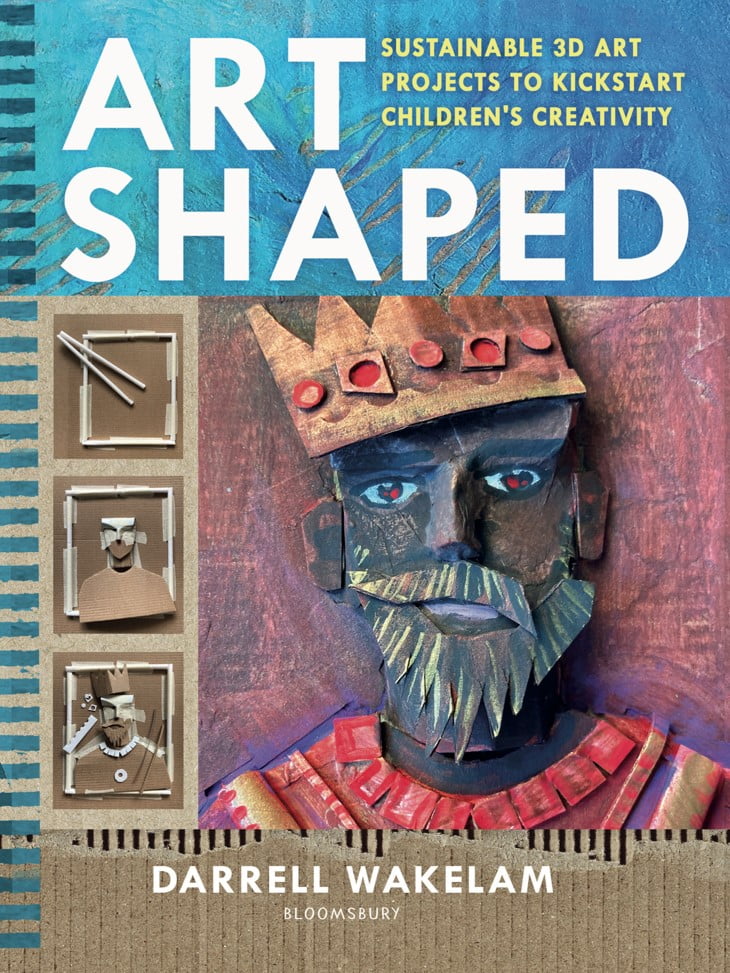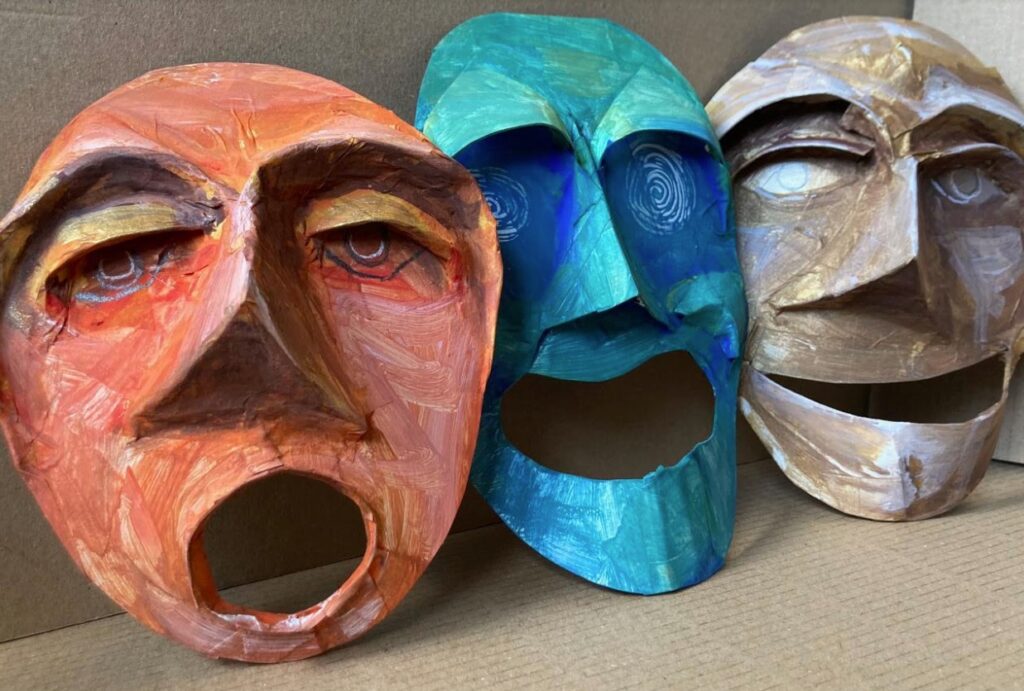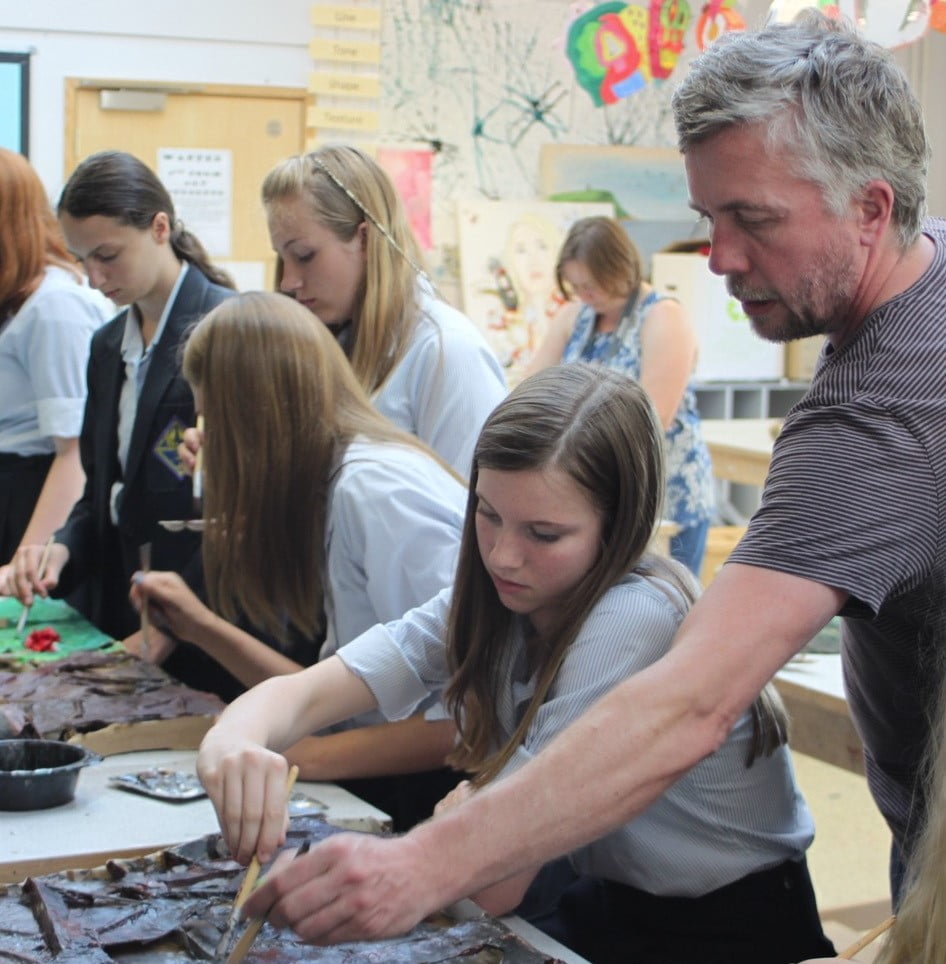We are SO excited to welcome artist Darrell Wakelam into The Reading Realm to talk about his inspiring new book ART SHAPED!

What inspired the book?
Art Shaped was inspired by the success of the online art projects which I created during the first COVID lockdown in 2020. I used the most popular ideas from those as the basis for some of the book’s projects, combining them with the most successful techniques from my 30 years of school workshop experience and, in addition, I asked teachers online to suggest themes and topics that they had either covered many times, or one’s that they had struggled with over the years. I started to put together the best of these suggestions and tried to collate the information into a useable, but exciting guide to 3D making.
The book has an introductory section explaining the basic skills and processes and then has fifty creative projects, divided across 5 themed chapters; ‘Faces and Figures’, ‘Birds & Beasts’, ‘The Natural World’, ‘The Made World’, and ‘Imaginary’. Each project is divided simply into ‘What’ the project is, step-by-step instructions of ‘how’ to go about this, ‘where’ it can be adapted or extended, and ‘when’ it can be linked to different themes or curriculum areas. I wanted it to be less like a ‘craft book’ and more like a well-loved recipe book, where the novice can stick to the exact recipes or ingredients and succeed but, at the same time, someone with more experience can adapt the recipe, adding their own ideas and ingredients and making it their own. Overall, I wanted to introduce people to simple art ideas that were achievable, affordable, and adaptable.


What do you hope readers will take from it?
I’d like to think that the projects will be helpful without being stifling, and at the same time impressive and exciting without being overcomplicated or off-putting. For example, there’s a ‘boat/ship making’ project which is a good example of this. In the instructions I build a ship that becomes an elaborate Tudor galleon, but at the same time you can just follow the first few stages and then turn the piece into a simple fishing boat, implementing a much less complicated process, but still using the original blueprint.
I also hope that it will encourage teachers, parents, and other educators to experiment with different 3D options. Many adults, especially those with less confidence or limited experience of art, will always opt for drawing, white paper, and a pencil. When, in fact, in my experience this is actually the harder option. Children understand three dimensions much better than two, and the 3D world makes a lot more sense to them. A 3D model has form and defined edges, making it easier to paint and more effective and engaging than a 2D drawing or painting.
I also really hope that the book will save people time. Creative teaching is tough, it requires a lot of preparation and can often take unexpected and demoralising twists! I’d love to think that people will benefit from my own mistakes. These mistakes have led to many important lessons being learned over the years and the accumulation of a whole host of useful solutions to these problems. These solutions are gathered here for the first time, inside these pages.
What is your favourite cardboard project?
I think out of all of the Art Shaped projects my favourites, possibly because they’ve travelled the furthest with me, are some of the ‘face’ and ‘mask-making’ ideas. Masks are a particular passion of mine, children love them, not just because they are fun to make, but because we connect with them on a basic human level. From the beginnings of human history every culture and civilisation have made masks or painted their faces. We are hard-wired with an instinctive need to experience what others see and feel, we love our own lives, but we also want to see through the eyes of others. The mask-making projects I have included in the book allow you to construct an endless array of faces, different emotions, diverse characters, faces from history, gods and goddesses, totems and tribal spirits, monsters, and mythical creatures. With just a few simple tweaks and additions, a basic mask can become all of these things and more, allowing us to let our imaginations take flight, whilst at the same time connecting us to our heritage and those thousands of other humans who have fashioned similar faces and masks as a way of escaping their reality. I love children’s innate connection to this heritage, for example, an adult will pick up a ‘tiger’ mask that I’ve made, and they’ll ask me, “what inspired this?”, “how long has it taken to build?” or, “what it is made of?” A child will pick up the very same mask, place it over their face, and growl.

How does your work in schools inspire you?
Many of the ideas, techniques, and blueprints for my work have grown out of my art workshops in schools. I’m very lucky, I’ve managed to make a living from doing what I love for my entire working life, and this has enabled me to learn a great deal along the way, particularly from the children I am working with. Children are natural problem solvers; they will ‘play’ their way through a problem, and they’ll make leaps of imagination much more fluently than most adults will. Their creative solutions sometimes hit on innovative ways of working, and I find that if you are open, and in tune to this yourself, then not only do you notice it, but you can change your own approach accordingly. In the words of the great Pablo Picasso “inspiration exists, but it has to find you working”. I take this to mean that it is possible to make leaps of imagination, and to create entirely new and innovative ideas, but only if you are actively involved and open to the possibilities. 3D artwork is great for this, I remember making a large dinosaur with a group of Year 2 children a few years ago. One boy was making something different to the other children, so I said, “what are these?” he said, “they are the bones of what the dinosaur has eaten, I’m putting them inside its belly”. Trying not to hurt his feelings I said, “but we’re going to cover this over with a kind of skin, so no one will know that they are inside”, and he looked up at me with sparkling eyes and said “no, but we will”.


